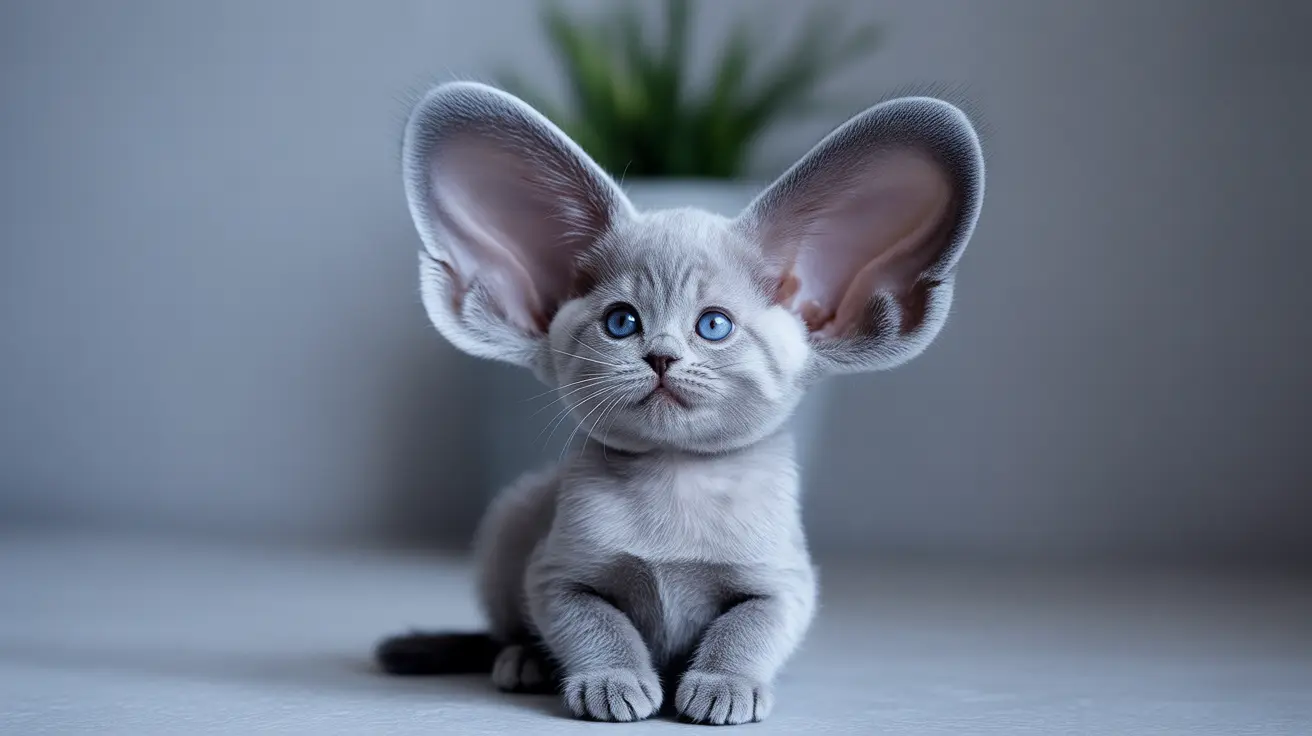Cat ears are remarkable organs that do far more than just look cute. These sophisticated sensory tools help our feline friends navigate their world with incredible precision, combining exceptional hearing abilities with crucial balance functions. Understanding normal cat ear anatomy can help you better monitor your pet's health and catch potential problems early.
The Three Main Parts of Cat Ear Anatomy
A normal cat ear consists of three distinct sections, each playing a vital role in your cat's hearing and balance:
The Outer Ear
The most visible part includes the pinna (the external ear flap) and ear canal. Cat pinnae are remarkably mobile, capable of rotating up to 180 degrees thanks to 32 specialized muscles. This mobility allows cats to pinpoint sounds with amazing accuracy without moving their heads.
The Middle Ear
Behind the eardrum lies the middle ear, containing three tiny bones called ossicles (hammer, anvil, and stirrup) that amplify sound vibrations. This area also includes the tympanic membrane and a unique air-filled cavity called the bulla, which enhances sound transmission.
The Inner Ear
The innermost section houses two crucial components: the cochlea for hearing and the vestibular system for balance. This complex structure enables cats to hear frequencies far beyond human capabilities and maintain their legendary agility.
Remarkable Features of Healthy Cat Ears
Normal cat ears display several distinctive characteristics:
- Clean, pale pink interior without excessive wax
- No unpleasant odor or discharge
- Upright position (except in breeds like Scottish Folds)
- Symmetrical appearance
- Responsive movement to sounds
- Smooth, hair-covered exterior
The Importance of Cat Ear Function
Cat ears serve multiple essential purposes:
Superior Hearing Capabilities
Cats can detect sounds from 48 Hz up to 85 kHz, far surpassing human hearing range (20 Hz to 20 kHz). This exceptional hearing ability helps them detect prey and potential threats from considerable distances.
Balance and Coordination
The vestibular system in cat ears is highly sophisticated, contributing to their remarkable balance and ability to land on their feet. This system constantly communicates with the brain to maintain spatial awareness and coordination.
Communication
Ear positions are a crucial part of feline body language, helping cats express emotions and intentions to both humans and other animals. Understanding these signals can provide valuable insights into your cat's mood.
Monitoring Your Cat's Ear Health
Regular observation of your cat's ears can help maintain their health:
- Check weekly for any unusual appearance or behavior
- Watch for excessive scratching or head shaking
- Notice any changes in ear position or mobility
- Monitor for debris or discharge
- Pay attention to any signs of discomfort when touching the ears
Frequently Asked Questions
What does a normal cat ear look and feel like, and how can I tell if it's healthy?
A healthy cat ear should be clean, pale pink inside, and free from unusual odors or discharge. The ear should feel smooth, without swelling or excessive warmth, and your cat shouldn't show discomfort when you gently touch the area.
How do cats' unique ear structures help them hear better than humans and dogs?
Cats' specialized ear structure, including their rotating pinnae, longer ear canals, and enhanced inner ear components, allows them to detect a broader range of frequencies and pinpoint sound sources with remarkable accuracy.
What is the best way to safely clean my cat's ears without causing damage?
Only clean visibly dirty ears using cat-specific ear cleaner and cotton balls (never cotton swabs). Gently wipe the visible part of the ear, avoiding deep insertion into the ear canal. When in doubt, consult your veterinarian.
Why do cats move their ears so much, and what do different ear positions mean?
Cats move their ears to locate sounds and communicate emotions. Forward-facing ears typically indicate interest or alertness, while flattened ears suggest fear or aggression. Relaxed ears usually signal contentment.
How can I recognize signs of ear infection or balance problems related to my cat's ears?
Watch for symptoms like head tilting, loss of balance, excessive scratching, dark discharge, strong odor, or inflammation. Any of these signs warrant a veterinary examination.






